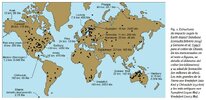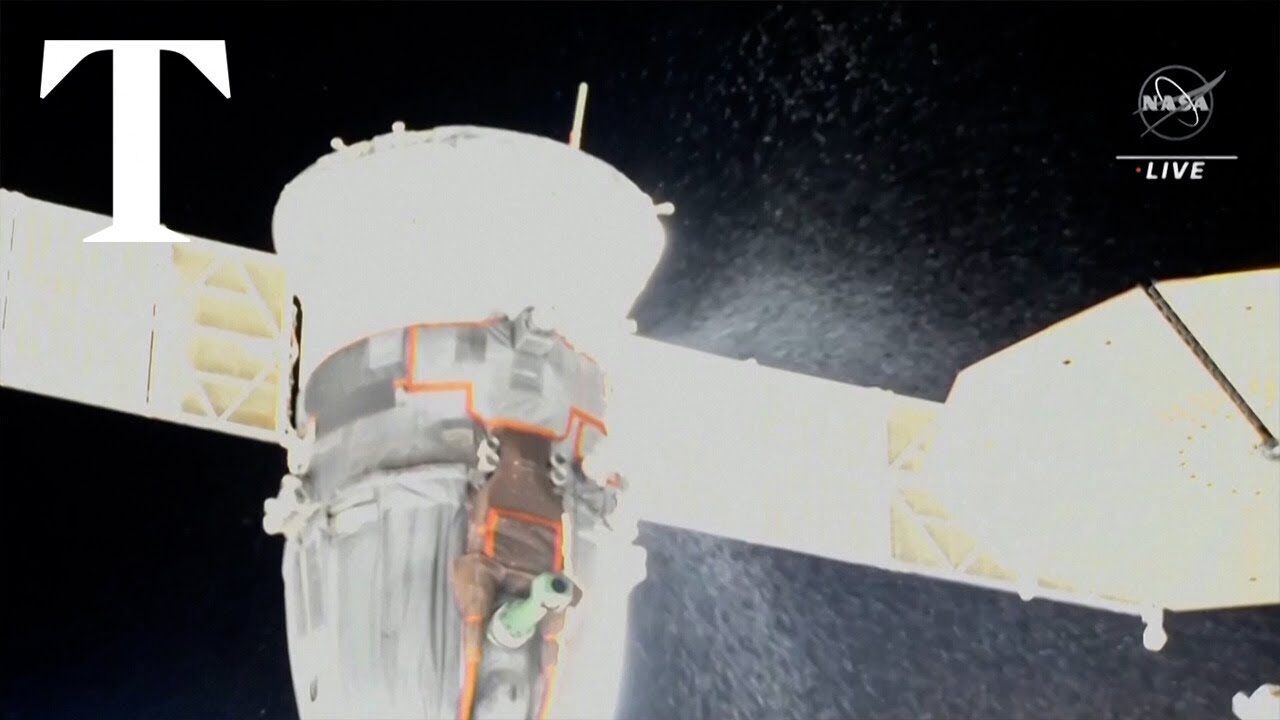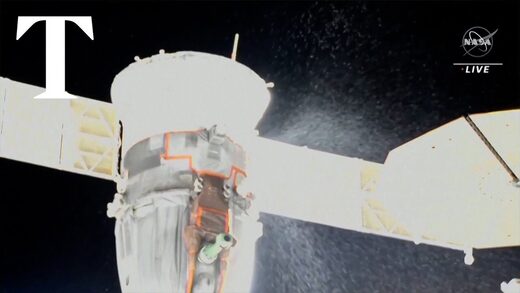In Depth
Asteroid 99942 Apophis is a
near-Earth object (NEO) estimated to be about 1,100 feet (340 meters) across.
When it was discovered in 2004, Apophis was identified as one of the most hazardous asteroids that could impact Earth. But that impact assessment changed after astronomers tracked Apophis and its orbit became better determined.
A radar observation campaign in March 2021, combined with precise orbit analysis, allowed astronomers to conclude that there is
no risk of Apophis impacting our planet for at least a century.
Estimated to be about 1,100 feet (340 meters) across, Apophis quickly gained notoriety as an asteroid that could pose a serious threat to Earth when astronomers predicted that it would come uncomfortably close in 2029. Thanks to additional observations of Apophis, the risk of an impact in 2029 was later ruled out, as was the potential impact risk posed by another close approach in 2036. Until March 2021, however, a small chance of impact in 2068 still remained.
When Apophis made a distant flyby of Earth around March 5, 2021, astronomers took the opportunity to use powerful radar observations to refine the estimate of its orbit around the Sun with extreme precision, enabling them to confidently rule out any impact risk in 2068 and long after.
“A 2068 impact is not in the realm of possibility anymore, and our calculations don’t show any impact risk for at least the next 100 years,” said Davide Farnocchia of NASA’s Center for Near-Earth Object Studies (
CNEOS), which is managed by NASA’s Jet Propulsion Laboratory in Southern California. “With the support of recent optical observations and additional radar observations, the uncertainty in Apophis’ orbit has collapsed from hundreds of kilometers to just a handful of kilometers when projected to 2029. This greatly improved knowledge of its position in 2029 provides more certainty of its future motion, so we can now remove Apophis from the risk list.”
Farnocchia was referring to the
Sentry Impact Risk Table. Maintained by CNEOS, the table keeps tabs on the few asteroids whose orbits take them so close to Earth that an impact can’t be ruled out. With the recent findings, the Risk Table no longer includes Apophis. Relying on optical telescopes and ground-based radar to help characterize every known near-Earth object’s orbit to improve long-term hazard assessments, CNEOS computes high-precision orbits in support of
NASA’s Planetary Defense Coordination Office.
To arrive at the Apophis calculations in 2021, astronomers used the 70-meter (230-foot) radio antenna at the Deep Space Network’s Goldstone Deep Space Communications Complex near Barstow, California, to precisely track Apophis’ motion. “Although Apophis made a recent close approach with Earth, it was still nearly 10.6 million miles [17 million kilometers] away. Even so, we were able to acquire incredibly precise information about its distance to an accuracy of about 150 meters [490 feet],” said JPL scientist Marina Brozovic, who led the radar campaign. “This campaign not only helped us rule out any impact risk, it set us up for a wonderful science opportunity.”
Goldstone also worked in a collaboration with the 100-meter (330-foot) Green Bank Telescope in West Virginia in order to enable imaging of Apophis; Goldstone was transmitting while Green Bank was receiving – a “bistatic” experiment that doubled the strength of the received signal.
The radar team continues to analyze its data, and they expect to learn more about the asteroid’s shape. Previous radar observations have suggested that Apophis has a “bilobed,” or peanutlike, appearance. This is a relatively common shape among near-Earth asteroids larger than 660 feet (200 meters) in diameter – at least one in six have two lobes.
Astronomers are also working to develop a better understanding of the asteroid’s rotation rate and the axis it spins around (known as its spin state). That knowledge will enable them to determine the orientation the asteroid will have with Earth as it encounters our planet’s gravitational field in 2029, which could change that spin state and even cause “asteroid quakes.”
Animation of Asteroid Apophis’ 2029 Close Approach with Earth
On April 13, 2029, Apophis will pass less than 20,000 miles (32,000 kilometers) from our planet’s surface – closer than the distance of geosynchronous satellites. During that 2029 close approach, Apophis will be visible to observers on the ground in the Eastern Hemisphere without the aid of a telescope or binoculars. It’s also an unprecedented opportunity for astronomers to get a close-up view of a solar system relic that is now just a scientific curiosity and not an immediate hazard to our planet.
How Apophis Got Its Name
Apophis is named for the demon serpent who personified evil and chaos in ancient Egyptian mythology.
Exploration
Apophis was discovered on June 19, 2004, by astronomers Roy Tucker, David Tholen, and Fabrizio Bernardi at the Kitt Peak National Observatory in Tucson, Arizona. They were only able to observe the asteroid for two days because of technical and weather problems. Fortunately, a team at the Siding Spring Observatory in Australia spotted the asteroid again later in the same year.
Since its discovery, optical and radar telescopes have tracked Apophis as it orbits the Sun and scientists are confident they know its future trajectory.
NASA is redirecting a spacecraft to study the asteroid. After completing its current mission to gather a sample of asteroid Bennu in 2023,
OSIRIS-REx will be renamed
OSIRIS-APophis EXplorer (OSIRIS-APEX). It will be redirected to encounter Apophis during the asteroid's 2029 Earth flyby. OSIRIS-APEX will enter orbit around Apophis soon after the flyby, providing an unprecedented close-up look at the asteroid. The spacecraft’s thrusters will be fired in an attempt to dislodge and study the dust and small rocks on and below Apophis’ surface.
Size and Distance
Apophis is about 1,100 feet (340 meters) in width. At its farthest, Apophis can reach a distance of about 2 astronomical units (One astronomical unit, abbreviated as AU, is the distance from the Sun to Earth.) away from Earth. It’s expected to safely pass close to Earth – within 19,794 miles (31,860 kilometers) from our planet’s surface – on April 13, 2029. This will be the closest approach to Earth by an asteroid of this size that scientists have known about in advance.
Orbit and Rotation
The orbit of Apophis crosses the orbit of Earth. It completes an orbit around the Sun in a little less than one Earth year (about 0.9 years). This places it in the group of Earth-crossing asteroids known as "Atens," whose orbits are smaller in width than the width of Earth's orbit, or 1 AU. As a result of its close encounter with Earth in 2029, the asteroid's orbit will be widened to become slightly larger than the width of Earth's orbit. At this point, it will be reclassified from the Aten group to the "Apollo" group (the group of Earth-crossing asteroids with orbits wider than 1 AU).
The asteroid “wobbles” as it spins about its short axis, typically rotating about once every 30 hours. Sometimes, there is also a “rocking” motion back and forth about its long axis, as well, which occurs over a longer period than the short axis wobble. (The technical term for this rocking motion is “non-principal axis rotation.”)
Structure
Apophis is classified as an S-type, or stony-type asteroid made up of silicate (or rocky) materials and a mixture of metallic nickel and iron. Radar images suggest it is elongated and possibly has two lobes, making it look something like a peanut. Much more will be learned about this asteroid's structure following its close flyby of Earth in 2029.
Formation
Like all asteroids, Apophis is a remnant from the early formation of our solar system about 4.6 billion years ago. It originated in the main asteroid belt between Mars and Jupiter. Over millions of years, its orbit was changed primarily by the gravitational influence of large planets like Jupiter so that it now orbits the Sun closer to Earth. As a result, Apophis is classified as a near-Earth asteroid, as opposed to a main-belt asteroid.
Surface
There are no high-resolution images of the surface of asteroid Apophis, but it is likely similar to surfaces of other stony-type asteroids like
Itokawa, the first asteroid from which samples were captured and brought to Earth for analysis.
Atmosphere
None
Magnetosphere
None
Rings
None
Moons
None
Potential for Life
None






